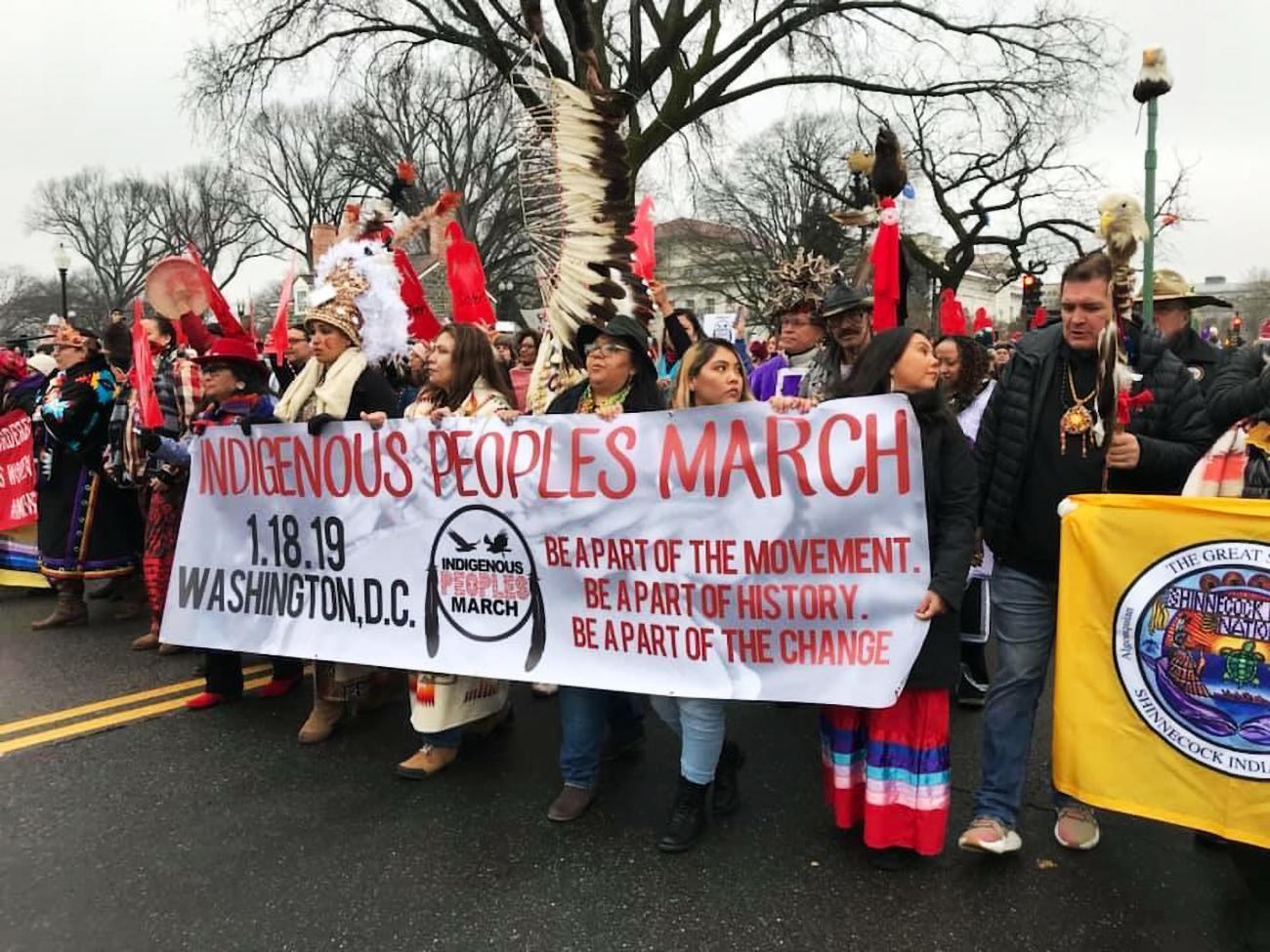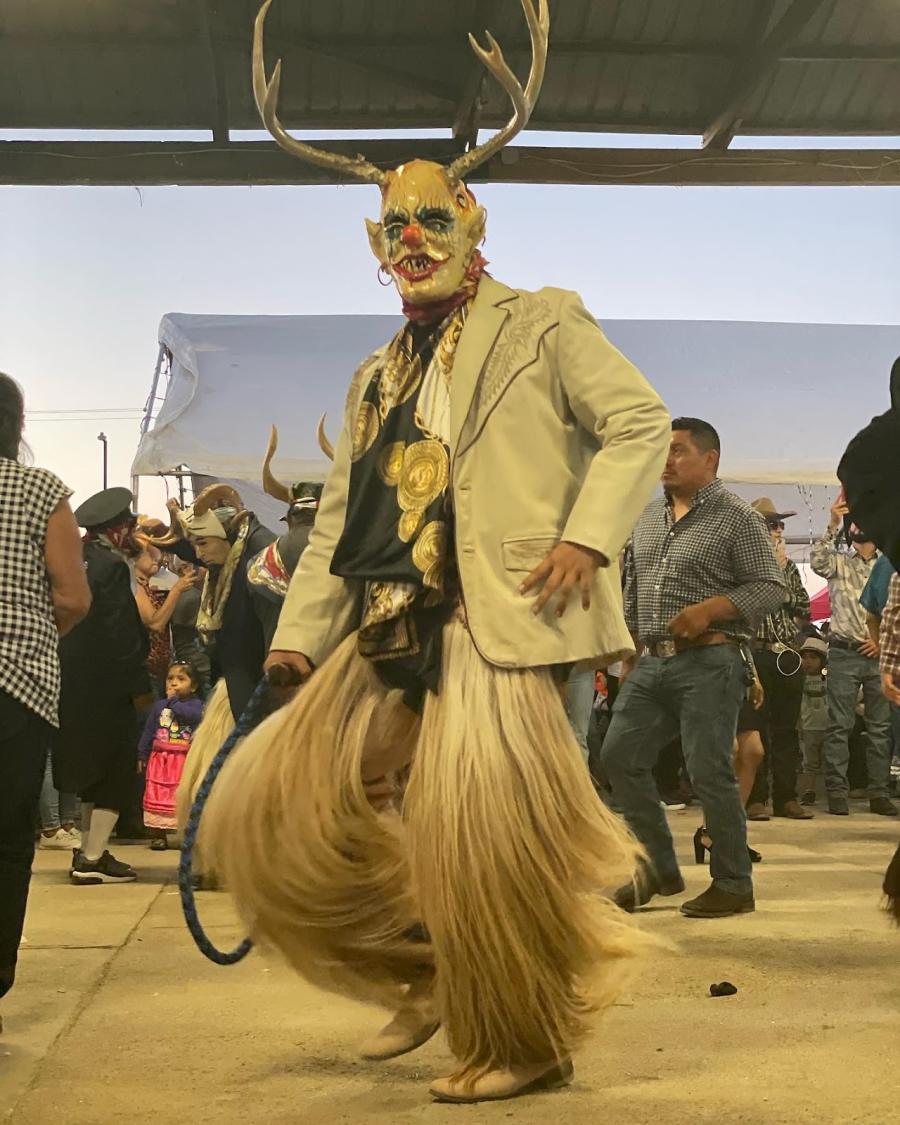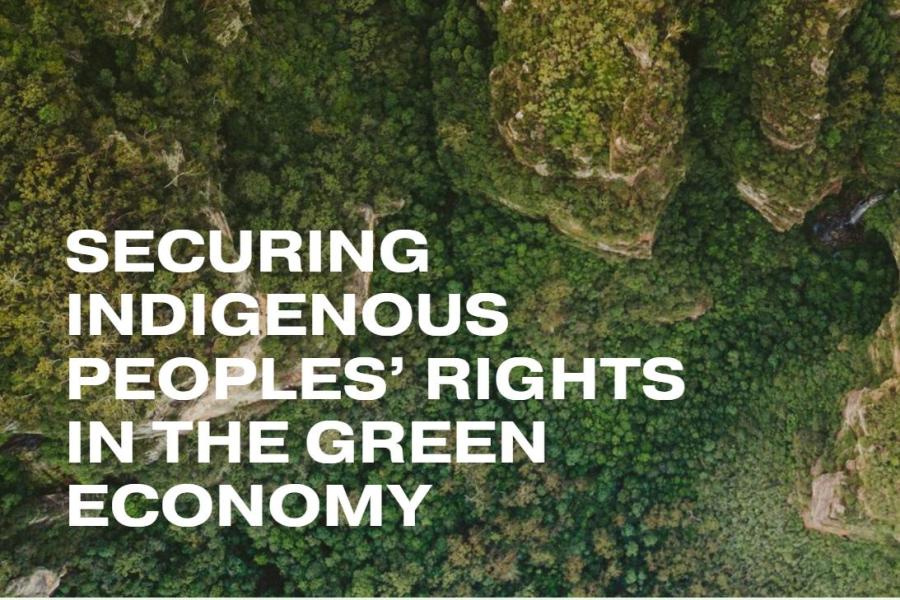
On Presidents Day 2020, we reflect on where Native Americans stand after three years of a Trump presidency. Since taking office, the current administration has rolled back policies that protect the rights of Indigenous Peoples and has failed to respect and honor Tribal Nations and their sovereignty.
In order to support the struggle for Indigenous rights, we must take a stand against the administration’s blatant disregard and disrespect for Indigenous communities and learn about the ways in which we can support Indigenous Peoples when the government continually refuses to do so.
1. Proposing to Rollback the National Environmental Policy Act
In 2020, Trump’s administration introduced its proposal to roll back environmental law to be able to speed up energy and other projects. This proposal seeks to limit public reviews of projects and allow the project sponsors to participate in the drafting of the federal environmental impact statements. Lisa DeVille, a leader of the Fort Berthold Protectors of Water and Earth Rights, claimed “Any law that provides broad opportunities for public participation in government decisions that affect the environment and local communities shouldn’t be rolled back; rather, laws like the National Environmental Policy Act should be embraced and strengthened. The National Environmental Policy Act is one of the only avenues for tribal members to have any input on federal actions.”
A number of Tribal activists testified at a hearing of Trump’s Council on Environmental Quality. Tribal historic preservation officer of the Rosebud Sioux Tribe Ben Rhodd argued that the possible changes are a “direct effrontery to the sovereignty of Native Americans” as no tribes were consulted.
2. Pushing for Arctic Refuge Drilling
The Trump administration has pushed to sell off the coastal plain of the Arctic National Wildlife Refuge for drilling. The Gwich’in Steering Committee, along with a coalition of Indigenous rights organizations including Cultural Survival, have raised concerns about human rights violations against the Gwich’in Nation. The coastal plain is referred to as “The Sacred Place Where Life Begins,” by the Gwich’in people and is crucial to their food security and way of life. Drilling in this sensitive area would pose an existential threat to the Gwich’in Nation. In a letter to 11 major banks, 15 Democratic senators urged the banks not to fund drilling in the area. The letter states “Protection of the Arctic National Wildlife Refuge is not only intrinsically important, it is also critical in the broader context of wilderness protection, Indigenous rights, working to combat climate change, and preparing the U.S. economy to weather the growing impacts of the climate crisis.”
3. Promoting a Racist Zero Tolerance Immigration Policy
Since December 2018, at least five Maya children have died at the U.S.-Mexico border died under the custody of Customs and Border Protection, and one Maya young woman,Claudia Patricia Gómez González, was shot and killed by a Border Patrol agent. Those responsible for these deaths continue to enjoy impunity under President Trump. The D.C.-based International Maya League staged a protest outside of the Department of Homeland Security in January. “As we have seen in the cases of our children, many of [those stopped by Border Patrol] couldn’t even understand what was happening, they couldn’t speak Spanish, [though many officials assume they can],” said Juanita Cabrera Lopez of the International Mayan League.
This past winter has seen a particularly bad flu season. Some genetic experts say Indigenous Peoples run a greater risk of dying from flu-related illnesses than other ethnic groups. Despite being mis-identified by the umbrella term “Hispanic” a large number of migrant detainees coming from Mexico, Guatemala, El Salvador, and Honduras are Indigenous. However, flu shots are not being administered in migrant detention centers, even to children. As a result three children have died of flu-related infections in the past year while in Customs and Border Protection detention, including a 2-year-old, a 6-year-old, and 16-year-old Guatemalan Carlos Gregorio Hernandez Vasquez, who died in a concrete cellblock after writhing and vomiting on the floor alone overnight last May.
4. Building the Border Wall
In February 2020, crews began controlled blasting of Monument Hill in the Organ Pipe Cactus National Monument for the construction of the border wall between the US and Mexico. This area is the site of a sacred burial ground to the Tohono O’odham Nation. The sacred sites in the area date back 10,000 years, and human remains have already been uncovered in the construction area. According to the Tohono O’odham Nation Chairman, Ned Norris, the Federal agencies constructing the border wall “are in violation of their own policies since meaningful consultations have not been held with the Tohono O’odham Nation.” Representative Raúl Grijalva (D-AZ) stated “There has been no consultation with the nation. This administration is basically trampling on the tribe’s history - and to put it poignantly, its ancestry.”
5. Establishing a Limited Task Force on Missing and Murdered American Indians and Alaska Natives
In November 2019, Trump signed an executive order to establish a task force charged with enhancing the physical safety of Indigenous People. Attorney General William Barr recently visited Montana where he announced the government will commit $1.5 million to hire coordinators in the 11 states where the issue of missing and murdered Indigenous individuals is most prominent. Navajo Nation Vice President Myron Lizer said: “I commend President Trump and his administration for recognizing the traumatic epidemic of missing and murdered indigenous relatives.” Yet many have criticized the task force as ill-conceived and insufficient. Congresswoman Deb Haaland (D-NM), a member of the Pueblo of Laguna stated that “the DOJ’s plan reflects a lack of consultation with Tribes, which is a pattern of this Administration on all Indian Country issues”. Others have pointed out that the task force is comprised only of federal officials, co-opting and excluding the work of Native activists, and that the task force focuses on reservations while excluding those living in urban areas.
6. Failing to Legislate & Attacks on Land Trusts
In December 2019, Trump signed three bills directly relating to Native American issues into law, one in support of the Spokane Tribe, one reauthorizing funding for Native language initiatives, and one federally recognizing the Little Shell Tribe of Chippewa Indians in Montana. However, these are the only pro tribal bills signed into law so far this legislative session; and according to Indianz.com, historically about 20 tribal bills have been signed into law during any particular session of Congress, regardless of which parties are running the show in Washington. In the previous session, passage of bills in favor of Tribes was down by about 40% compared to previous years.
Meanwhile, under Trump the Department of the Interior seems to be moving to restrict how tribes in the lower 48 states and in Alaska can reclaim their homelands via land trusts. In 2018, the Department of Interior, under the Trump administration, took Mashpee Wampanoag land in Massachusetts out of trust. This marks the first time Native land has been taken out of trust since the “termination era” of the 1940s-1960s in which the US government intentionally attempted to assimilate Native Americans into the broader culture. The Mashpee Wampanoag have been advocating for support for “The Mashpee Wampanoag Tribe Reservation Reaffirmation Act” reverse the decision. However, Trump’s outspoken opposition for the bill, including this racist tweet, aided in stopping the bill from passing in the Senate. The Mashpee Wampanoag Tribe has since been fighting to reclaim their land rights in the federal courts.
"It's unconscionable and unthinkable that [on] something that is this critically important to so many tribes [we] are not being consulted with," said Cheryl Andrews-Maltais, the chairwoman of the Aquinnah Wampanoag Tribe to Indianz.com "It appears there is something going on underneath our noses, behind closed doors, that could undermine our sovereignty and our ability to have our tribal lands protected by the United States, which we paid for in advance through the blood and life of our ancestors, our natural resources and our lands."
7. Slashing the Bears Ears Monument
Native Tribes have advocated and fought for the protection of Bears Ears for years. In 2016 it was named a national monument under the Obama administration. Less than a year later, Trump approved of reducing Bears Ears Monument by 85 percent and announced it will be opened for oil and gas bidding. At the same time, Trump also decreased the size of the Grand Staircase-Escalante National Monument. Together, this was the largest rollback in the history of the United States of public lands protection.
In response, the Hopi Tribe; Pueblo of Zuni; and Ute Mountain Ute Tribe, represented by the Native American Rights Fund jointly filed suit. In the latest case update on January 9, 2020, the Native American Rights Fund states that the tribal plaintiffs filed a motion for partial summary judgment. “The motion asks the judge to rule that President Trump’s attempt to reduce Bears Ears is beyond the president’s authority. Quite simply, the president is not authorized to revoke a national monument once it has been established.” Check out these actions you can take.
8. Greenlighting Pipelines Across Native Treaty Lands
On January 24, 2017, Trump signed an executive order that reversed the Obama legislation and advanced the construction of the fiercely-opposed Dakota Access pipeline. This expedited the environmental review that Trump described as an "incredibly cumbersome, long, horrible permitting process."
On February 7, 2017, Trump authorized the Army Corps of Engineers to proceed, ending the environmental impact assessment and the associated public comment period. These pipelines are a direct attack on tribal sovereignty, clean water, clean air, and sacred sites. But the groundswell of support shown at Standing Rock has provided a legacy of improved understanding and commitment to Indigenous sovereignty by many grassroots movements in the US and around the world.
On November 8, 2018, following a suit filed by the Indigenous Environmental Network and the North Coast Rivers Alliance, the Honorable Judge Morris overturned Trump’s executive order, blocking construction of the Dakota Access Pipeline on grounds that “President Trump violated federal environmental laws when his Administration claimed that the KXL Pipeline was consistent with the public interest.” Both organizations celebrated this ruling as a victory in favor of Indigenous and environmental rights.
Unfortunately, due to a loophole in the law, Trump was able to sidestep the ruling and sign a new order himself in March 2019 granting permission for the pipeline’s construction. The Oglala Sioux Tribe has plans to bring this to court once again in 2020.
9. Cutting Federal Programs
Trump has proposed the removal of several federal assistance programs, including the Supplemental Nutrition Assistance Program (SNAP). Trump has proposed to replace SNAP, which provides monthly benefits to purchase food items, with a “food box” program. This program would “replace half the benefits people receive with boxed, nonperishable — i.e. not fresh — foods chosen by the government and not by the people eating them.” Decreased access to nutritious food poses a major burden on health and could lead to increased rates of Type 2 diabetes and obesity amongst Native communities reliant on SNAP.
Native Americans were also disproportionately affected by the government shutdown, which temporarily halts many federal assistance programs and federal health initiatives. Russell Begaye, president of the Navajo Nation, described the hardships inflicted upon the Navajo Peoples during the shutdown to The New York Times. He revealed in a time of heavy snowfall “roads are unplowed because federal maintenance has stopped. Many people are now trapped in their homes, unable to make the 20- or 50-mile journey to buy water, groceries, and medicine.” The shutdown has also pressured several Native American clinics to close due to a lack of funding.
10. Promoting Voter Suppression
The U.S. government has systematically targeted Indian Country with voter suppression laws to discourage political participation. Strict voter ID laws that require voters to provide federal documentation with current addresses target Native communities as reservations often do not have residential addresses.
After many Native Americans were unable to register to vote in North Dakota during the 2016 election, in January 2016, eight Native Americans filed suit to block the North Dakota voter ID law, which disenfranchised Native American voters and violated both state and federal constitutions as well as the Voting Rights Act. In October 2018, Native American Rights Fund and others filed a separate lawsuit on behalf of the Spirit Lake Tribe, and the Standing Rock Sioux tribe joined in 2019. In February 2020, in a major win, the Secretary of State has agreed to settle. “We are delighted to come to an agreement that protects native voters,” said Matthew Campbell, NARF Staff Attorney. “It has always been our goal to ensure that every native person in North Dakota has an equal opportunity to vote, and we have achieved that today. We thank the Spirit Lake Nation, Standing Rock Sioux Tribe, and the individual native voters that stood up for the right to vote.”
Meanwhile, on the ground, communities worked tirelessly to register Native voters despite existing laws. Amidst the fervor of the 2018 midterm elections, Four Directions, a Native American voting rights organization, diligently worked to combat voter suppression and increase Native American voter participation. O.J. Semans, the co-director of Four Directions and Rosebud Sioux Tribe member, collaborated with political scientists and mapping experts to “bring maps to voting sites so that people can point to the location of their residence, identify a specific address, and on-hand Tribal representatives can issue them a note of confirmation on tribal letterhead.” Seman’s efforts showcase a dedicated commitment to battling what he calls "blatant voter disenfranchisement” and solidifying permanent access to voting mechanisms for Indigenous communities across the United States.
11. Encouraging Mocking of Native People and Use of Hateful Language
In early 2019, Indigenous Peoples mobilized a massive Indigenous Peoples March on Washington to demonstrate opposition to the current political climate. At the march, a group of high school students from Covington Catholic High School mocked a Native elder of the Omaha Tribe, Nathan Philips, who was partaking in the Indigenous Peoples March in DC. Trump defended the students’ actions and claiming that the disrespect felt by Philips was "Fake News."
Trump also consistently and publically uses hateful language towards Native Americans. He repeatedly uses “Pocahontas” as a slur. Even during a 2017 ceremony honoring Native American veterans, Trump referred to Senator Elizabeth Warren as Pocahontas. The Lakota Law Project tweeted about the incident saying “The President calls a white woman “Pocahontas” - who was a Native American victim of child rape - at an event “honoring” Diné WWII code talkers, all in front a portrait depicting the original architect of Indian removal, Andrew Jackson.” Regarding the portrait of Andrew Jackson, Gyasi Ross, a member of the Blackfeet Nation Tribe, said “It’s an incredibly distasteful wink in front of people who have sacrificed so much.”
Following Elizabeth Warren’s live Instagram Q. and A. session on January 2, 2019, Trump tweeted “If Elizabeth Warren, often referred to by me as Pocahontas, did this commercial from Bighorn or Wounded Knee instead of her kitchen, with her husband dressed in full Indian garb, it would have been a smash!” Trump received swift criticism for these highly offensive remarks. Ruth Hopkins, a Dakota/Lakota Sioux writer, biologist and Tribal attorney tweeted “+300 of my people were massacred at Wounded Knee. Most were women and children. This isn’t funny, it’s cold, callous, and just plain racist.”
When Elizabeth Warren announced she would be running for president in early 2019, Trump tweeted “Today Elizabeth Warren, sometimes referred to by me as Pocahontas, joined the race for president. Will she run as our first Native American presidential candidate, or has she decided that after 32 years, this is not playing so well anymore? See you on the campaign TRAIL, Liz!” The word ‘trail’, capitalized, invokes the Trail of Tears when Native Americans were forcibly removed from their land. The Trail of Tears led to thousands of deaths. Candessa Tehee, assistant professor of American Indian Studies of Northeastern State University stated “I’m a Cherokee woman. I have ancestors who were on the trail. And I was - at this point, I shouldn’t be shocked by anything that President Trump says or does - I was honestly shocked that he’s willing to so casually invoke the darkest chapter of American history to take a cheap shot at a rival, I was flabbergasted.” Mary Kathryn Nagle of the Cherokee Nation states that Trump uses Indigenous people “as characters, as almost cartoons in a political feud [and that it] gives the American public the implicit permission to do that to the actual Native people living here.”
Photo: Alongside the banners calling for the protection of Indigenous lands and rights, marchers at the Indigenous Peoples March advocated for unity and the protection of Native women. Photo by Chenae Bullock.



